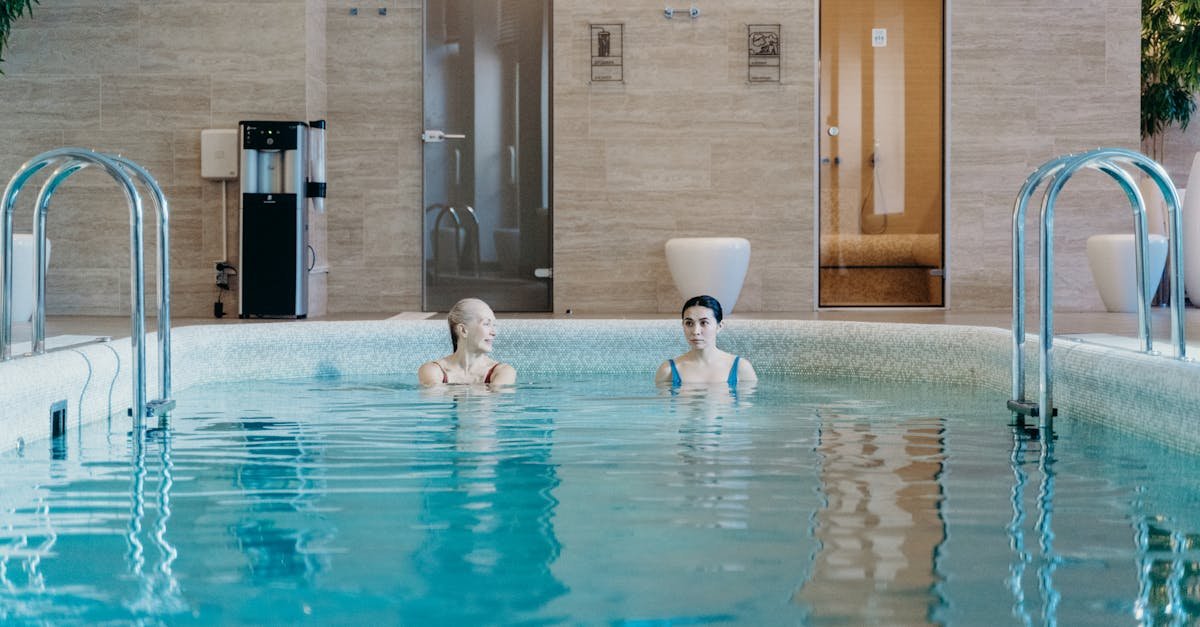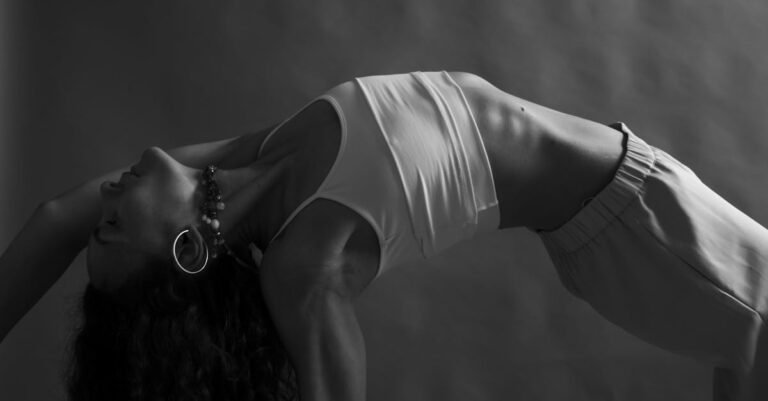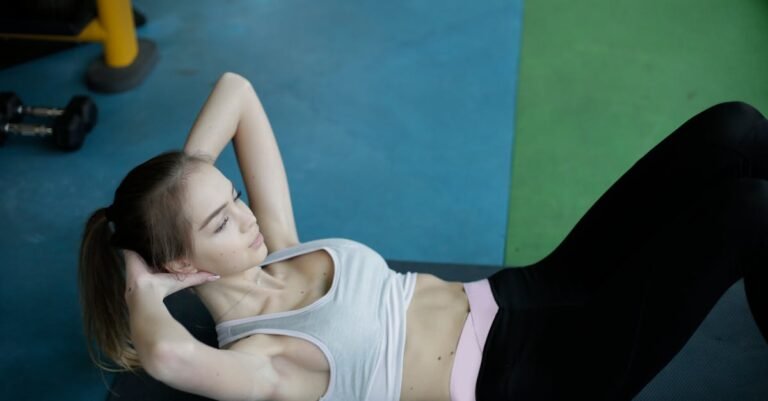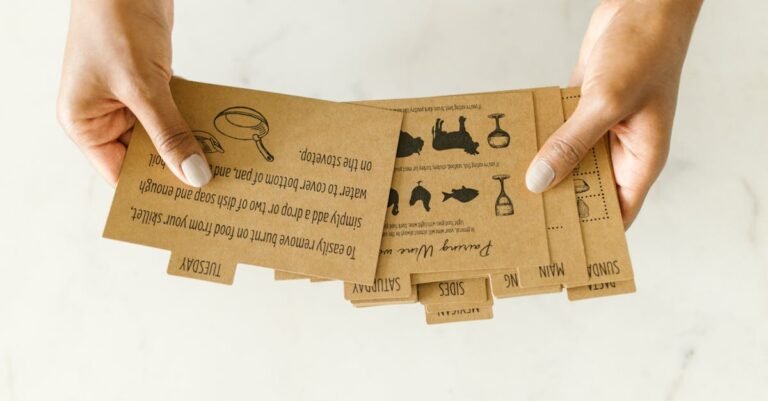Getting older doesn’t mean slowing down entirely. In fact, embracing movement during your senior years can be one of the best things you do for your overall well-being! Forget grueling workouts or pushing yourself to the limit. We’re talking about gentle exercise – activities that boost your health, energy, and independence without putting excessive strain on your body. Ready to explore some fantastic ways to stay active, feel great, and maybe even have a little fun along the way? Let’s dive in!
Why Staying Active is Golden in Your Golden Years
Think of your body like a well-loved classic car. It might have a few more miles on it, but with regular maintenance – in this case, gentle exercise – it can keep running smoothly for years to come! Staying active isn’t just about maintaining a certain weight; the benefits run so much deeper, touching nearly every aspect of your life.
Physically, regular gentle exercise helps maintain muscle strength, which is crucial for everyday tasks like getting out of a chair, carrying groceries, or playing with grandkids. It improves balance, significantly reducing the risk of falls – a major concern for many seniors. It keeps joints lubricated and flexible, easing stiffness and potentially reducing arthritis pain. Plus, it’s fantastic for your heart health, helping manage blood pressure and improving circulation. Think better sleep, more energy, and a stronger immune system too!
But the perks don’t stop there. Movement is incredibly beneficial for your mental and emotional health. Exercise releases endorphins, those natural mood boosters that can combat feelings of anxiety or depression. It sharpens cognitive function, helping keep your mind alert and potentially lowering the risk of dementia. It provides structure to your day and a sense of accomplishment. Honestly, isn’t feeling stronger, sharper, and happier worth lacing up those sneakers (or hopping in the pool)?
Before You Jump In: The Safety First Chat
Okay, feeling motivated? Fantastic! But before you dash out the door or try that first chair yoga pose, let’s talk safety. It’s super important to approach any new activity thoughtfully, especially as we age. A little preparation goes a long way in preventing injuries and ensuring your fitness journey is positive and sustainable.
Talk to Your Doc
This is non-negotiable, folks. Before starting any new exercise program, have a chat with your doctor or healthcare provider. They know your medical history, any existing conditions (like heart problems, diabetes, arthritis, or osteoporosis), and medications you’re taking. They can offer personalized advice on which types of exercises are safest and most beneficial for you. They might recommend specific modifications or even refer you to a physical therapist for a tailored plan. Think of it as getting the green light from mission control before launch – it ensures a smoother, safer journey.
Warm-Up Wisdom & Cool-Down Calm
Remember how we talked about your body being like a car? You wouldn’t just jam it into high gear on a cold morning, right? Same principle applies here. Always start your exercise session with a warm-up. This means 5-10 minutes of light activity, like gentle marching in place, arm circles, or slow walking. The goal is to gradually increase your heart rate and blood flow to your muscles, making them more pliable and less prone to injury.
Equally important is the cool-down. After your main exercise, don’t just stop abruptly. Spend another 5-10 minutes gradually slowing down. This could involve slower walking followed by some gentle stretches. Cooling down helps your heart rate and blood pressure return to normal gradually and can help reduce muscle soreness later. Skipping these steps is like skipping the safety checks – you might get away with it sometimes, but it increases your risk unnecessarily.
Finding Your Groove: Types of Gentle Exercise
The wonderful thing about gentle exercise is that there are so many options! You don’t have to do anything you don’t enjoy. The key is finding activities that suit your fitness level, interests, and physical capabilities. Generally, a well-rounded routine includes elements of cardio, strength, flexibility, and balance.
Getting Your Heart Pumping (Gently!) – Cardio
Cardiovascular exercise, or cardio, gets your heart rate up and improves circulation. It strengthens your heart and lungs and boosts endurance. Gentle cardio doesn’t mean running a marathon; it means sustained, rhythmic movement that challenges you slightly without leaving you breathless or exhausted.
Walking: The Simple Superstar
Walking is perhaps the most accessible, affordable, and effective form of gentle exercise. You don’t need fancy equipment or a gym membership – just a comfortable pair of shoes! Start slow and gradually increase your duration and pace. Aim for 30 minutes most days of the week, but even 10-15 minute chunks add up. You can walk around your neighborhood, explore a local park, hit the treadmill at a community center, or even just walk laps inside your home or a mall if the weather is bad. Focus on good posture – stand tall, swing your arms naturally, and look ahead. Walking isn’t just exercise; it’s a chance to get fresh air, clear your head, and observe the world around you. Try varying your routes to keep things interesting!
Water Aerobics: Making a Splash
If you have joint pain or arthritis, exercising in water can feel like a miracle! The buoyancy of the water supports your body weight, taking stress off your joints while still providing resistance for a great workout. Water aerobics classes are often lively and social, involving movements like walking, leg lifts, arm raises, and gentle jumping jacks in the pool. The water’s resistance helps build strength and cardiovascular fitness simultaneously. Many community centers and gyms offer classes specifically designed for seniors. It’s low-impact, effective, and often, a lot of fun!
Cycling: Smooth Sailing on Wheels
Cycling is another fantastic low-impact cardio option. A stationary bike, especially a recumbent one (where you sit in a chair-like seat with back support), is particularly kind to the knees and back. It allows you to control the resistance and speed, making it easy to tailor the workout to your fitness level. You can pedal away while watching TV, listening to music, or chatting with a friend. It improves lower body strength and endurance, gets your heart pumping, and is a safe option regardless of the weather outside.
Building Strength Without Strain
Strength training isn’t just for bodybuilders! Maintaining muscle mass is vital as we age. Strong muscles support your joints, improve balance, boost metabolism, and make everyday activities much easier. Gentle strength training focuses on controlled movements using light resistance.
Why Strength Still Matters
Think about it: lifting a bag of groceries, opening a jar, getting up from the floor, climbing stairs – these all require muscular strength. As we age, we naturally lose muscle mass (a process called sarcopenia), which can lead to weakness, increased fall risk, and decreased independence. Strength training helps counteract this loss, keeping you strong, capable, and confident. It also plays a crucial role in maintaining bone density, helping to prevent osteoporosis.
Bodyweight Basics: Using What You’ve Got
You don’t necessarily need weights to build strength. Your own body weight provides plenty of resistance! Simple exercises, often modified for safety and ease, can be very effective. Consider:
- Chair Squats: Stand in front of a sturdy chair. Slowly lower yourself as if you’re about to sit down, tapping the seat lightly (or actually sitting if needed), then stand back up. Keep your chest up and knees behind your toes.
- Wall Push-ups: Stand facing a wall, about arm’s length away. Place your palms flat on the wall at shoulder height. Slowly bend your elbows and lean your body towards the wall, keeping your back straight. Push back to the starting position.
- Step-ups: Use a low, sturdy step or the bottom stair. Step up with one foot, then the other. Step back down, leading with the first foot. Repeat, alternating the lead foot. Hold onto a railing for support if needed.
Start with a small number of repetitions (e.g., 8-10) and gradually increase as you get stronger.
Resistance Bands: Your Flexible Friends
Resistance bands are inexpensive, versatile, and perfect for gentle strength training. These stretchy bands come in various resistance levels (usually color-coded), allowing you to start light and progress as you gain strength. You can use them for a wide range of exercises targeting different muscle groups: bicep curls, triceps extensions, seated rows, leg presses (while seated), and more. They provide resistance throughout the entire movement, offering a unique challenge compared to free weights. Plus, they’re portable and easy to store!
Flexibility & Balance: Your Keys to Stability
Flexibility and balance often go hand-in-hand and are incredibly important for preventing falls and maintaining mobility. Flexibility keeps your joints moving through their full range of motion, while balance helps you stay steady on your feet.
The Joy of Movement: Staying Limber
Stiffness and reduced range of motion can make simple tasks feel difficult. Gentle stretching helps maintain flexibility, eases muscle tension, and improves posture. Focus on slow, controlled stretches, holding each for 15-30 seconds without bouncing. Never stretch to the point of pain – you should feel a gentle pull, not a sharp sensation. Stretching major muscle groups like your hamstrings, quadriceps, calves, chest, shoulders, and back is beneficial. Think of it as giving your muscles a nice, relaxing “ahh” moment.
Chair Yoga: Stretch Without the Stress
Yoga doesn’t have to involve pretzel-like poses on the floor! Chair yoga adapts traditional yoga poses so they can be done while seated or using a chair for support. It’s a fantastic way to improve flexibility, balance, strength, and body awareness in a safe and accessible manner. Classes often incorporate gentle stretches (like seated cat-cow, spinal twists, neck rolls), strengthening poses (using the chair for modified lunges or squats), and breathing exercises for relaxation. It’s a holistic practice that benefits mind and body.
Tai Chi: The Moving Meditation
Often described as “meditation in motion,” Tai Chi involves slow, flowing, graceful movements combined with deep breathing. Originally a martial art, it’s now widely practiced for its health benefits, particularly for improving balance and reducing fall risk in seniors. The movements shift body weight smoothly from side to side and front to back, enhancing coordination and strengthening the muscles responsible for stability. It’s low-impact, reduces stress, and promotes a sense of calm and focus. Many community centers offer beginner-friendly Tai Chi classes.
Simple Steps to Better Balance
You can practice balance exercises almost anywhere, anytime. Always have something sturdy nearby to hold onto, especially when starting out.
- Heel-to-Toe Walk: Walk in a straight line, placing the heel of one foot directly in front of the toes of the other foot, like walking on a tightrope.
- Single-Leg Stand: Stand tall and lift one foot slightly off the ground. Hold for 10-15 seconds, then switch legs. Use a chair or counter for support.
- Side Leg Raises: Stand tall, holding onto a support. Slowly lift one leg out to the side, keeping it straight. Hold briefly, then lower slowly. Repeat on the other side.
Even small, consistent efforts can make a big difference in your stability.
Making Exercise a Habit You Love
Starting is one thing; sticking with it is another! How do you make gentle exercise a regular part of your life? Find the joy in it! Choose activities you genuinely enjoy – if you hate swimming, water aerobics probably isn’t for you, no matter how good it is. If you love music, try dancing or exercising to your favorite tunes. If you enjoy nature, make walking or Tai Chi in the park your go-to.
Consistency is key. Aim for regular sessions rather than sporadic bursts of activity. Scheduling your workouts like any other important appointment can help. Start small and gradually increase the duration or intensity – don’t try to do too much too soon, as that can lead to burnout or injury. Partnering with a friend or joining a group class can provide motivation, accountability, and social connection, making exercise feel less like a chore and more like a fun outing. Celebrate your progress, no matter how small!
Listen to Your Body: Your Wisest Guide
This is perhaps the most crucial piece of advice. Your body sends you signals – learn to interpret them. It’s normal to feel some mild muscle soreness when starting a new activity (this is different from sharp pain). However, you should never push through sharp, sudden, or persistent pain. Pain is your body’s warning sign that something is wrong.
Pay attention to how you feel during and after exercise. Are you overly fatigued? Dizzy? Short of breath? These are signs to slow down or stop. Don’t be afraid to take rest days; recovery is just as important as activity for letting your body repair and strengthen. If an exercise consistently causes pain, stop doing it and consult your doctor or a physical therapist. They can help identify the issue and suggest alternatives or modifications. Be patient and kind to yourself – progress takes time.
Conclusion: Embrace Your Active Future!
Staying active as a senior isn’t about defying age; it’s about embracing it with vitality, strength, and independence. Gentle exercise offers a wealth of benefits, from improved physical health and mobility to enhanced mood and cognitive function. Whether you choose walking, water aerobics, chair yoga, Tai Chi, or simple strength and balance moves, the key is to find activities you enjoy, start slowly, listen to your body, and be consistent. You have the power to make your golden years truly active and fulfilling. So, why not take that first gentle step today?
FAQs
1. How often should seniors engage in gentle exercise?
Aim for at least 150 minutes of moderate-intensity aerobic activity (like brisk walking or water aerobics) or 75 minutes of vigorous-intensity activity spread throughout the week. Include muscle-strengthening activities at least two days a week, and incorporate balance and flexibility exercises regularly, ideally daily or several times a week. However, always start based on your current ability and gradually increase. Even short bursts of activity (10 minutes) count!
2. What if I experience pain during exercise?
Stop the activity immediately if you feel sharp, sudden, or persistent pain. Mild muscle soreness after starting a new routine is normal, but actual pain is not. Consult your doctor or a physical therapist to understand the cause of the pain and get advice on modifications or alternative exercises. Never push through significant pain.
3. Is it too late to start exercising if I haven’t been active for years?
Absolutely not! It’s never too late to start benefiting from physical activity. The key is to start very slowly and gently, perhaps with just 5-10 minutes of walking or a few simple chair exercises. Focus on consistency and gradually increase the duration and intensity as you feel more comfortable and capable. Always consult your doctor before beginning.
4. Do I need special equipment or a gym membership?
Not necessarily! Many effective gentle exercises require minimal or no equipment. Walking just needs good shoes. Bodyweight exercises use your own resistance. Resistance bands are inexpensive and versatile. Chair yoga uses a simple chair. While gyms and community centers offer great resources (pools, classes, equipment), you can build a very effective routine at home or outdoors.
5. How can I stay motivated to exercise regularly?
Find activities you genuinely enjoy. Exercise with a friend or join a group for social support and accountability. Schedule your workouts. Set realistic, achievable goals and track your progress. Focus on how much better you feel – more energy, less stiffness, better mood. Remind yourself of the long-term benefits for your health and independence.










